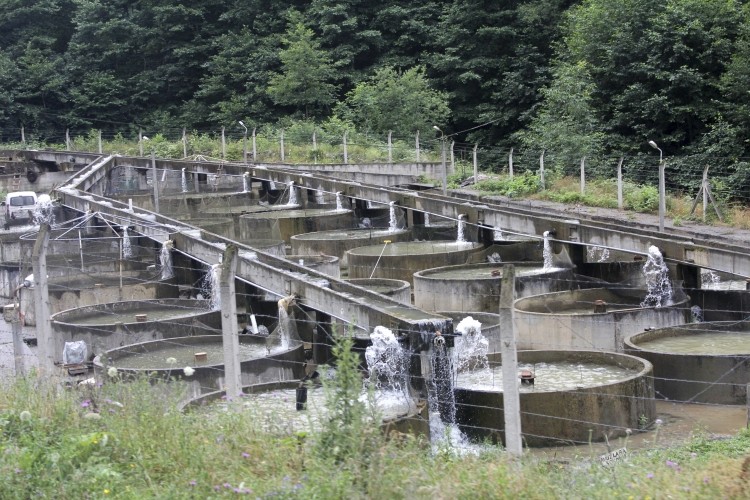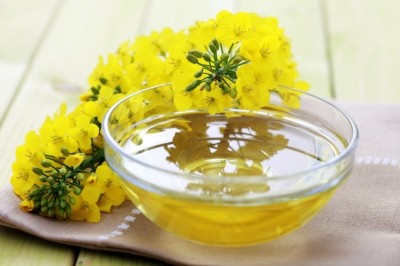Juvenile brown trout see benefit from veggies in diet

A team of international researchers from Germany, Canada and Norway examined the use of plant-based diet material in the feeds of juvenile brown trout to promote later growth and examine dietary elasticity. The group published its results in the journal of Aquaculture.
“The present study, therefore, aimed to induce nutritional programming in wild brown trout by feeding plant-based diets from first feeding onwards,” said the researchers. “It was hypothesized that the early feeding of plant-derived protein sources would act as a nutritional stimulus provoking improved growth performance when the same diets were applied later in life. Therefore, the potential of wild brown trout fry to exhibit plastic responses to different plant-based feeding strategies was explored and it was investigated whether the feeding of plant-based diets from first feeding onwards induced a permanent improvement in growth performance.”
The research team found that initially up to 90% of the fishmeal in a diet could be replaced with plant-derived proteins while maintaining growth performance, but the effect did not last for the entire juvenile period, said the researchers. But, a mixed fishmeal and plant-protein diet boosted growth beyond a pure fishmeal diet.
“We demonstrated that (i) the feeding of wild brown trout fry with inclusion levels of up to 50% of dietary plant proteins is beneficial during the first weeks of life and (ii) continuous feeding of at least 50% plant-derived dietary protein resulted in the same rate of growth when compared to the growth resulting from fishmeal as the exclusive dietary protein source,” they said.
Why vegetable proteins?
Farmed production of brown trout in aquaculture typically focuses on growth of juveniles, said the researchers. No family-based breeding program has been created for brown trout, as opposed to other fish including Atlantic salmon and rainbow trout.
But, the fish usually have a strong phenotypic plasticity that includes different genetic substructure and a high genetic diversity, they said.
Juvenile brown trout are often given a diet formulated for rainbow trout, which likely includes an increasing amount of plant-based protein, they said. The use of plant proteins in fish feed has been growing as access to fishmeal declines and prices increase.
The influence of different plant-based resources on growth and health of salmonids has been examined in past research, they said.
“It has also been demonstrated that the digestive physiology of fish can be heavily affected by plant-based diets, especially due to digestive enzyme inhibitors or indigestible carbohydrates,” said the researchers. “Nevertheless, most studies have focused on Atlantic salmon and rainbow trout, and little is known about the impact of plant-derived feedstuff on brown trout.”
Past research for gilthead sea bream demonstrated that diets' makeup for brood stock can influence how efficiently nutrients are used by juveniles through nutritional programming, they said. “Nutritional programming is dependent on an early-life stimulus that provokes a permanent or long-term physiological effect on later life stages,” they added.
Use of strictly carnivorous brown trout brood stock could alter the digestive physiology of fry and fingerlings raised with commercial trout diets that include about 50% plant-derived proteins, they said. “Moreover, nutritional programming is not only effective via reproduction: the early feeding with plant-based diets has been shown to significantly improve growth and feed intake of rainbow trout later in life when fed again with plant-based diets,” they added.
Additionally, digestive enzymes, including amylase, pepsin and trypsin, were tracked from hatching to monitor influence from an altered diet, they said.
Study details
In the study, 3,000 just hatched brown trout were given one of three diets – where fishmeal provided all of the protein, 50% of the protein or 10%, said the researchers. The remaining protein was generated with plant-based ingredients including corn gluten, sunflower meal, soy protein concentrate, wheat gluten and fava bean meal.
Diets and whole-fish body homogenates were analyzed for nutrients, they said.
Fish were fed on the first diet until day 89 post hatch and then each group was split into three separate groups all of which were again given one of the three trial diets through day 137 post hatch, they said.
Fish were sampled to determine body weight on hatching day and at four points before day 20 post hatch, said the researchers. Sampling also was done on days 20, 23, 25 and 28 and seven times through the end of the first feeding stage.
From day 89 to 137 individual body masses were measured and samples were collected for total body composition, they said. Specific growth rates (SGR) for the first feeding period and three following periods were determined.
Eggs were tested for amylase and pepsin activity before hatching and at hatching, and hatched fish were tested for digestive enzymes before and after the feed trial started with later samples collected on days 89 and 137, they said.
Results
At the end of the first feed period, fish getting the 100% fishmeal diet and the 10% fishmeal diet had similar dry body weight, but fish getting the 50% plant-protein and fishmeal diet were heavier, said the researchers. SGR for the first feeding period also saw better performance from the fish receiving the mixed diet.
“The present experiment could not induce a permanent nutritional programming effect of the first feeding diet; instead, the cross-over feeding design demonstrated that wild brown trout fry exhibit highly plastic responses to different feeding strategies during the first months of life,” they said.
All fish saw wet body weight improve from day 89 to day 137, but fish getting the 100% fishmeal diet had higher body weights than fish getting either other diet for that period, they said. The highest body weights were seen for fish getting the mixed diet or 10% fishmeal diet, followed by the 100% fishmeal diet in the second feeding period.
Fish that had the 10% fishmeal diet for both feeding periods had lower body weights compared to those getting either the 100% diet or the mixed diet for both periods, said the researchers.
Whole-fish body homogenates decreased at the end of the second period compared to the first except for fish getting the 10% diet, they said. But, crude fat grew for all diets from the first stage to the second and ash was reduced for fish that got diets other than the 10%.
At the end of the first feeding trial, pepsin activities were higher for fish receiving the mixed diet and similar for the other feeds, they said. Amylase activities were similar for all diets.
On day 137, both pepsin and amylase activities were similar for fish regardless of diet, they said.
Source: Aquaculture
Title: Plastic responses by wild brown trout (Salmo trutta) to plant-based diets
DOI: published online before print: 10.1016/j.aquaculture.2017.04.006
Authors: Stéphanie Michl, Benjamin Weisa, Jeffrey Hutchings, Carsten Schulz













